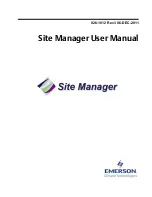
Private networking with DPNSS
559
Programming Operations Guide
Loop avoidance
Errors in the configuration of a network may make it possible for a call to be misrouted, and arrive
at a PBX system through which it has already passed. This would continue, causing a loop which
would eventually use up all of the available channels. The Loop Avoidance service permits
counting of DPNSS 1 transit PBXs and rejecting a call when the count exceeds a predetermined
limit.
Programming loop avoidance
To set Loop avoidance during hardware configuration:
1
Click the keys beside
Resources, Media Bay Modules
,
Bus 02 - 07
,
Modules on Bus.
2
Select
Module 1.
3
Choose
Module type DPNSS
.
4
Type a value (0-25) in the Maximum transits box.
The default value is 25.
Private networking with DPNSS
(International only)
DPNSS supports the Universal Dialing Plan (UDP), an international standard for sending and
receiving private numbers over networks. The UDP requires that a dialing number includes the
following:
•
a Private Access Code, programmed into the system as part of the destination code table to
prevent conflicts with the internal numbering system. (
Access Codes
)
•
a Home Location Code (HLC) assigned to each PBX system, and configured as part of the
destination code (a maximum of seven digits). For each HLC, a routing code must be
programmed in the system. (
Dialing plan, UDP, Location code
)
•
a Directory Number (DNs) assigned to each extension as a line appearance. The DN appears
as the last string segment in a dialed number. In the number 244-1111, 1111 is the DN.
A typical Private Number, using a private access code and dialed from another site on the network,
appears below.
In this networking example, a private network is formed when several systems are connected
through a Meridian M1 and a terminating Business Communications Manager system. Each site
has its own HLC and a range of DNs. The figure below illustrates this example.
Private Access Code + Home Location Code
+ Directory Number
= Calling Party Number
6
+ 848
+ 2222
= 6-848-2222
Содержание BCM 3.7
Страница 1: ...Part No N0008589 3 3 December 2006 Business Communications Manager 3 7 Programming Operations Guide...
Страница 4: ...4 Software licensing N0008589 3 3...
Страница 32: ...32 Contents N0008589 3 3 W 937 Index 939...
Страница 46: ...46 Tables N0008589 3 3...
Страница 64: ...64 How to get help N0008589 3 3...
Страница 90: ...90 Manually activating Telnet N0008589 3 3...
Страница 116: ...116 Delayed system restart N0008589 3 3...
Страница 194: ...194 Configuring a data module N0008589 3 3...
Страница 276: ...276 Setting line telco features N0008589 3 3...
Страница 310: ...310 Using COS passwords N0008589 3 3...
Страница 364: ...364 Enhanced 911 E911 configuration N0008589 3 3...
Страница 380: ...380 Renumbering DNs N0008589 3 3...
Страница 398: ...398 Saving wizard pages on your computer N0008589 3 3...
Страница 458: ...458 Voice Mail settings N0008589 3 3...
Страница 488: ...488 Setting system telco features N0008589 3 3...
Страница 508: ...508 Other programming that affects public networking N0008589 3 3...
Страница 522: ...522 PRI networking using Call by Call services N0008589 3 3...
Страница 592: ...592 Monitoring Hunt groups N0008589 3 3...
Страница 636: ...636 Configuring Double Density N0008589 3 3...
Страница 640: ...640 Using the Network Update Wizard N0008589 3 3...
Страница 666: ...666 Importing and Exporting DHCP data N0008589 3 3...
Страница 722: ...722 Restarting the router N0008589 3 3...
Страница 726: ...726 Important Web Cache considerations N0008589 3 3...
Страница 748: ...748 Configuring an Interface with NAT N0008589 3 3...
Страница 794: ...794 IPSec N0008589 3 3...
Страница 818: ...818 Configuring the Policy Agent characteristics N0008589 3 3...
Страница 832: ...832 Firewall rules for Business Communications Manager with Dialup interfaces N0008589 3 3...
Страница 876: ...876 ISDN Programming N0008589 3 3...
Страница 1004: ...1004 Index N0008589 3 3...
















































